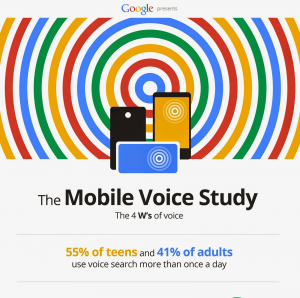— June 21, 2017

andreabreq / Pixabay
Some outsourcing contracts actually ensure poor performance. It’s true! Service levels are too high, penalties drive over-performance in one area at the expense of others, and governance structures look pretty on paper but create zero accountability. Couple these problems with attitudes of blame and superiority that block problem solving and open dialogue and you have a recipe for failure.
Here is the frustrating thing to me—and maybe this resonates with you, too—people on both sides of the buyer/service provider relationship complain about their partners, but then don’t do anything about it. I sat stunned through a recent QBR, as an executive spent 45 minutes reading emails about the service provider’s poor performance. The rest of us could only study the backs of our hands.
I get it: the relationship can be better and the provider can perform better. Why complain and not act? Why not change the relationship and, if need be, change the contract too?
But even in such dire situations, I know there is hope. I puzzled over why companies don’t act in the face of less than stellar relationships. Then I had an epiphany.
How do you garden?
People approach contracting like my grandmother taught me to grow vegetables. There’s only one way: Big vegetable patch, long rows of kale or carrots or lettuce. Long hours of weeding, fertilizing and watering. A rush to harvest the entire row at maturity, followed by processing, freezing and canning. So when a friend described a completely different way, planning and planting the garden square foot by square foot in order to stage when the various vegetables were ready to eat, I thought, “That’s not a vegetable garden.” Then, driving away, I kicked myself: Many business people think about changing contracts the way I was thinking about changing how I garden.
We tend to operate from one paradigm, and we tend to resist changing that paradigm. Negotiating a contract has its own paradigm. We invest tons of time up front to get the contract in place. It’s a headache and we all want to get back to work. Once in the relationship, it seems easier to just deal with the problems (or complain about them) and we don’t even consider making adjustments to make the problems go away.
Unless there’s a crisis, like the 2009 recession, or a change in the scope of work, we won’t take on the “hassle” of anything that feels like re-negotiation. Because that’s how we see it: Live with it or start over.
Change Your Paradigm: Make Incremental Changes
There’s a third option: incremental relationship and contract changes. My clients, including the one above, turned difficult into collaborative. In general, here’s how one of my clients did it:
First, the buying company and service provider together identified problems with the relationship using diagnostic tools. Then they set about changing the relationship, one step at a time: they co-located to improve communications, they refreshed KPI’s to better track performance, and they started regular team meetings including representatives from both companies. They made small adjustments to drive improvements and now their relationship is so strong they are renewing the contract for another several years.
What do companies usually do? More of the same: If service levels aren’t being met, they add stiffer penalties without ever unearthing the underlying issues. If they already have stiff penalties, stiffer is better and micro-management is even better – as if that will solve the problem! If no one attends meetings, no one usually asks why but the “boss” will demand attendance anyway. When no one knows what to talk about, they resort to rehashing the past to pass the time – like that executive reading all those critical emails.
Don’t Know Where to Start?
Frustrated clients ask me where to start. Assuming you have no policies or clauses that prevent modifications, I suggest three options that tend to provide both strategic and tactical benefits.
First, KPI’s. KPI’s drive focus and behavior, so if you’re not getting the results you want, look here. Also look at the service level associated with the metric: 100% might look good on paper but provide no meaningful evaluation of the service provider’s performance vis a vis the end user.
Second, accountability. Strive to have two people accountable for the same outcome, one in each company. This arrangement will inherently drive collaboration, creative problem-solving and a speedier approval process. Remember, the end user doesn’t care about the distinction between buying company and service provider, she only cares about results. That means both companies are accountable. Both companies created the relationship, so if something’s not working, blaming will not solve the problem.
While it is not always possible to have a direct one-to-one accountability relationship at all levels, it must exist at some level, and the closer to the end user the better.
Third, governance meetings, such as QBRs. For many relationships, this change may be the one high-impact change that won’t require any change to the contract itself. If there are problems, meetings should be frequent and focused on problem solving and strategy. Get this: I asked an outsourcing executive the last time his company held a QBR with a particular provider. After a minute he sheepishly said, “last year.” I thought, “Seriously? And you wonder why things aren’t going swimmingly?”
If your people don’t see value in QBRs (you can usually tell if they’re postponed or poorly attended), change them. Provide a forum to step away from daily tasks to look at the relationship in a more strategic light. Set aside 30% of the time to discuss strategy.
What Will You Do Next?
Bottom line, if something’s not working, figure out a way to do things differently. I’m doing that with vegetables. I don’t have the space or the time to do it the way my grandmother did, so rather than feel frustrated that I can’t teach my daughters about growing food, I’m going to start with one square foot: one vegetable and one herb in one pot. This summer my girls and I will enjoy cherry tomatoes and basil.
What commitment will you make to improve your outsourcing relationship? I’ve introduced three options. Not sure where you should begin? Call me to schedule a free one-hour strategy session. I’m sure you will enjoy the rewards of your effort at least as much as I will enjoy mine.
Business & Finance Articles on Business 2 Community
(65)
Report Post




